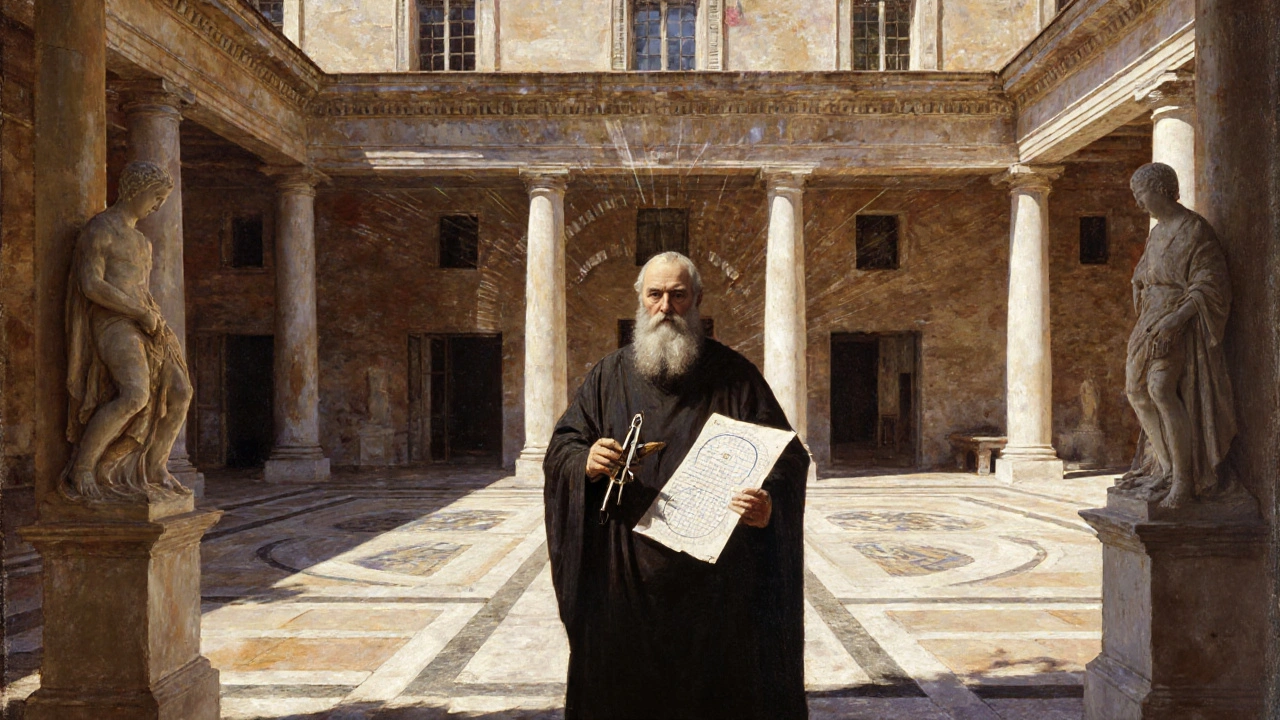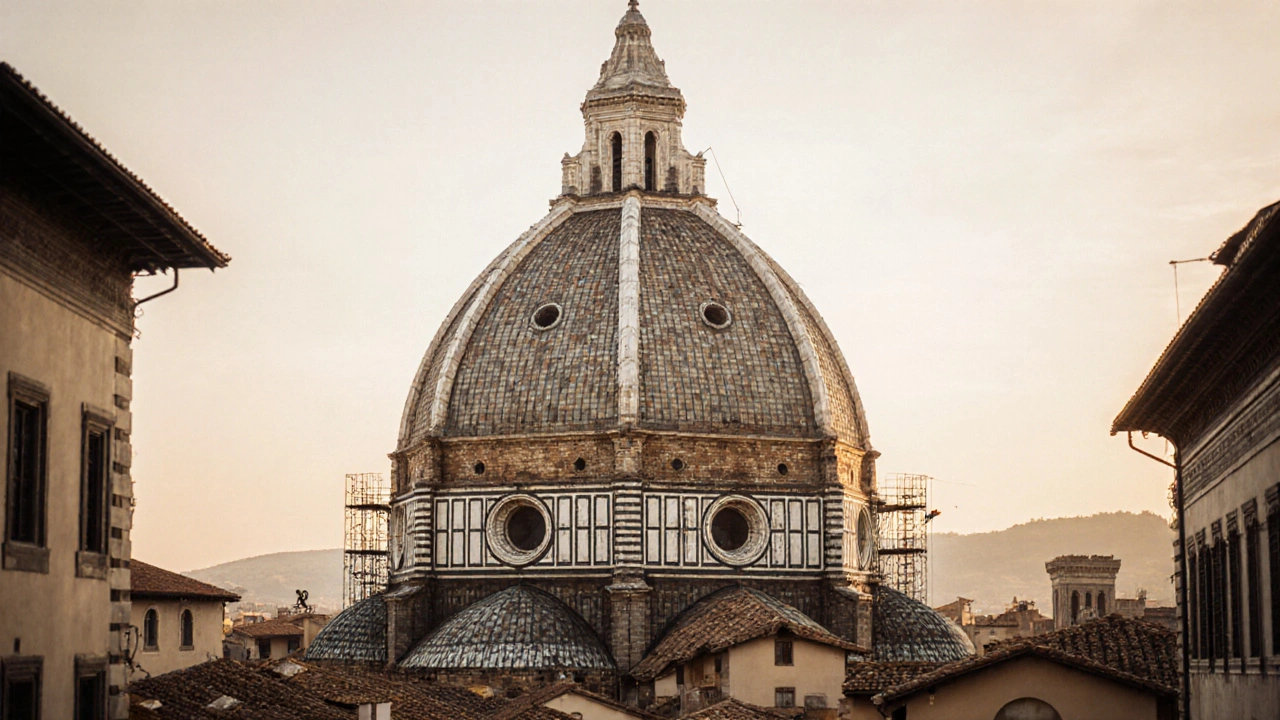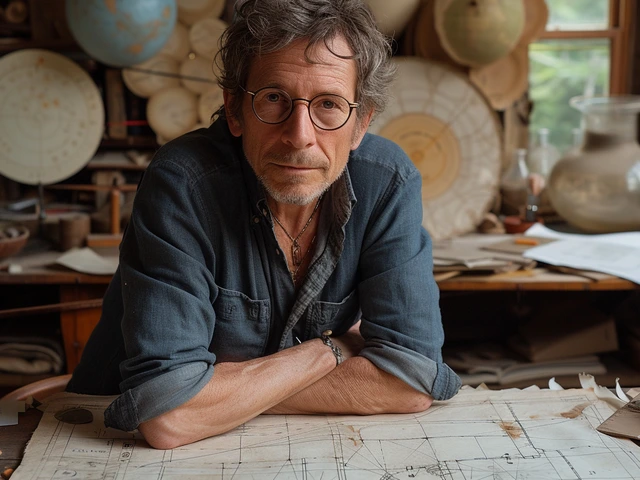Renaissance Proportion Calculator
Proportion Calculator
Calculate Renaissance-style building proportions using classical architectural principles from Alberti and Palladio. Input your room dimensions to see if they match Renaissance harmony standards.
When you walk through Florence or Rome today, you don’t just see old buildings-you stand inside a revolution. Renaissance architecture didn’t just change how people built homes and churches. It changed how humans saw themselves in the world. For the first time in centuries, buildings weren’t just places to live or pray. They became expressions of human reason, beauty, and control over nature. This was the moment when art and science stopped being separate and started working together-hand in hand.
The Birth of a New Language
Before the 1400s, European buildings followed the Gothic style: tall, dark, pointed arches, flying buttresses, stained glass that drowned interiors in colored light. It was awe-inspiring, yes-but also mysterious, almost otherworldly. Then came Filippo Brunelleschi. In 1418, he won a competition to build the dome of Florence’s Santa Maria del Fiore. No one had built a dome this large since Roman times. No one knew how to do it without wooden centering that would cost more than the city’s treasury.
Brunelleschi didn’t just guess. He studied. He traveled to Rome, measured fallen temples, sketched columns, and copied Roman vaults. He didn’t copy them exactly-he improved them. His dome used a double shell, herringbone brickwork, and hidden chains to hold the weight. It was engineering disguised as art. And when it was finished in 1436, it didn’t just hold up. It looked like it had always belonged there. That was the breakthrough: architecture that felt both ancient and new.
The Rules That Changed Everything
Leon Battista Alberti, a scholar, poet, and architect, wrote De re aedificatoria in 1452-the first major architectural treatise since Vitruvius. He didn’t just describe buildings. He gave rules. Proportions. Symmetry. The classical orders: Doric, Ionic, Corinthian. These weren’t decorative add-ons. They were mathematical systems. Each column height matched the diameter of its base. Each doorway’s width related to the room’s ceiling height. It wasn’t about looking pretty. It was about harmony.
Think of it like music. A chord sounds right because the notes have a fixed relationship. Alberti said buildings should work the same way. A church’s nave, transept, and apse weren’t randomly sized. They were tuned to each other. This was the first time architecture became a science you could teach. You didn’t need to be born with a gift for design. You could learn it.
The Power of Perspective
One of the quietest revolutions happened on paper. Brunelleschi didn’t just build domes-he invented linear perspective. He painted a panel of the Baptistery in Florence, using a single vanishing point. When you looked through a hole in the back, the image matched reality. It wasn’t magic. It was math. This changed everything.
Architects could now draw buildings that looked real before they were built. Clients could see what the chapel would look like. Builders could measure exactly where to place each stone. Artists like Masaccio used it in frescoes. Architects used it to plan facades. Suddenly, space had depth. Walls had logic. The world became something you could map, measure, and control. That’s why Renaissance buildings feel so calm. They don’t overwhelm you. They invite you in, because they follow the rules your eyes already understand.

Where Science Met Stone
Andrea Palladio didn’t just design villas. He designed systems. His Villa Rotonda, built near Vicenza in the 1570s, has four identical facades, each with a portico supported by Ionic columns. The central dome sits perfectly above a square room. Every window aligns with a column. Every door opens to a view. It’s not just beautiful-it’s a diagram of balance.
Palladio didn’t invent this. He refined it. He used geometry to solve real problems. The villa’s symmetry wasn’t for show. It let light enter evenly. It kept rooms cool in summer and warm in winter. He studied Roman aqueducts to understand how to channel water. He copied Roman baths to design efficient heating. His books, like Four Books on Architecture, became textbooks across Europe. Thomas Jefferson read them. He used Palladio’s ideas when he designed Monticello. That’s how far the influence reached.
The Legacy in Plain Sight
Walk into any courthouse, university, or bank built before 1900 in the U.S. or Europe. You’ll see the same things: columns, pediments, symmetrical windows, domes. That’s not coincidence. That’s Renaissance architecture speaking through time.
Even modern buildings owe it a debt. The U.S. Capitol? Its dome echoes Brunelleschi’s. The Louvre’s east façade? Its rhythm of arches and pilasters follows Alberti’s rules. The symmetry of the White House? Palladio’s hand is there.
But the real legacy isn’t in the style. It’s in the mindset. The Renaissance taught us that beauty isn’t accidental. It’s designed. That function and form aren’t opposites-they’re partners. That you can solve hard problems with math, observation, and patience. That a building isn’t just shelter. It’s a statement: we believe in reason. We believe in order. We believe we can make the world better.

Why It Still Matters
Today, we talk about sustainability, smart homes, biophilic design. We think these are new ideas. But the Renaissance architects were doing the same thing-just with different tools. They used geometry to reduce material waste. They oriented buildings to catch the sun. They used thick walls to keep heat in. They didn’t have solar panels, but they knew how to work with nature.
And they didn’t separate art from engineering. They didn’t say, "Let the artist decorate and the engineer build." They were the same people. Brunelleschi was a goldsmith, an engineer, a surveyor, and an architect. Palladio was a scholar who read Roman texts and then built what he learned. That’s the lesson we’ve forgotten. The best buildings aren’t made by specialists. They’re made by people who understand both the soul and the structure.
What to Look For Next Time You Walk Past a Renaissance Building
- Look for symmetry-not perfect, but intentional. Doors and windows mirror each other.
- Count the columns. Are they spaced evenly? Do they match the height of the windows above?
- Find the vanishing point. Stand in front of the façade. Do all the lines lead to one spot?
- Check the dome. Is it octagonal? Is it double-walled? That’s Brunelleschi’s fingerprint.
- Look at the roofline. Is it flat? Is there a balustrade? That’s a Roman touch.
These aren’t just decorations. They’re clues. They tell you someone thought deeply about how people live, move, and feel inside a space.
What makes Renaissance architecture different from Gothic?
Gothic architecture aimed to reach heaven-tall spires, thin walls, stained glass that turned light into mystery. Renaissance architecture aimed to reflect human reason-symmetrical, grounded, proportional. Gothic buildings feel spiritual and overwhelming. Renaissance buildings feel calm, balanced, and human-scaled. One is about awe. The other is about harmony.
Who was the most important Renaissance architect?
Filippo Brunelleschi started it all with the Florence Dome. But Leon Battista Alberti gave it theory. And Andrea Palladio made it portable-his designs spread across Europe and America. If you had to pick one, Brunelleschi was the spark. But without Alberti and Palladio, the movement wouldn’t have lasted.
Did Renaissance architecture only exist in Italy?
It began in Italy, but it didn’t stay there. By the 1500s, France, England, Spain, and later the Americas adopted its ideas. In England, Inigo Jones brought Palladian style to London. In the U.S., Thomas Jefferson built Monticello and the University of Virginia using Palladio’s rules. It became the language of power, learning, and civic pride across the Western world.
How did Renaissance architects learn their craft?
They didn’t go to architecture school. They studied Roman ruins, read ancient texts like Vitruvius, trained as artists or engineers, and learned by doing. Brunelleschi was a goldsmith. Alberti was a lawyer and poet. Palladio was a stonecutter’s apprentice. They learned by observation, measurement, and trial. Knowledge came from hands-on work, not textbooks.
Why do modern buildings still use Renaissance elements?
Because they work. Symmetry feels stable. Proportion feels right. Columns and pediments signal importance. Even today, governments, banks, and universities use these forms because they communicate order, permanence, and trust. It’s not about copying the past. It’s about using a language that still speaks clearly.





